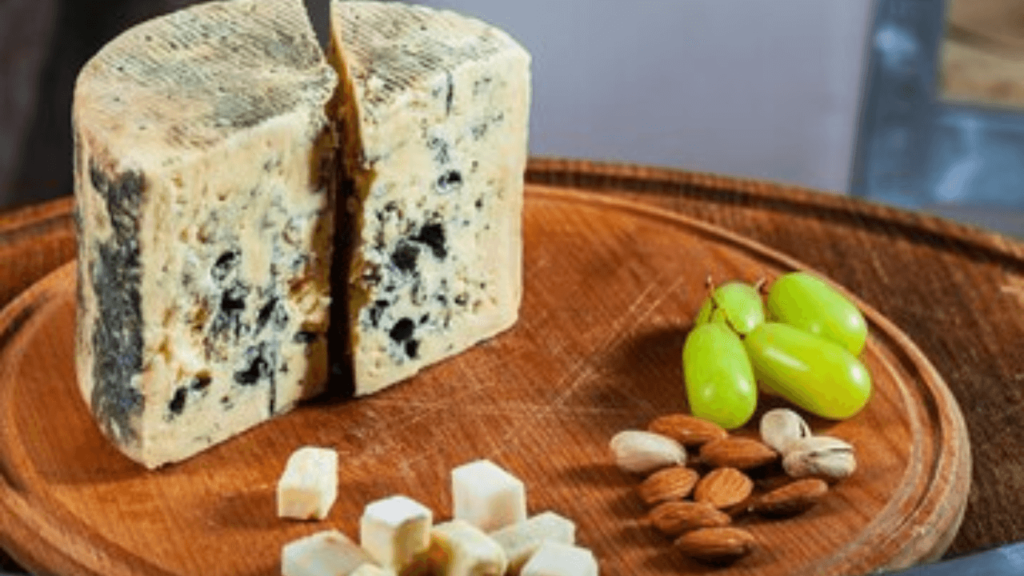Masgonzola is a name that carries layers of tradition, culinary craft, and cultural heritage. While it is less widely discussed compared to other popular foods, masgonzola stands as a symbol of the artistry involved in blending flavors, textures, and history. It has earned a place in kitchens, markets, and dining tables, not only as a unique food but also as an emblem of cultural connection. To understand masgonzola is to appreciate a combination of heritage, flavor, and shared community practices.
Historical Roots of Masgonzola

The story of masgonzola begins centuries ago. Many culinary traditions grew out of necessity, and masgonzola is no different. What started as a preservation method soon evolved into a delicacy, celebrated for its distinct qualities. Rural communities valued masgonzola not only as nourishment but also as a way of keeping traditions alive. Over generations, families passed down recipes and techniques, each region adding its unique touch. The result was a tapestry of variations, all tied together by the same foundation.
The rise of masgonzola also reflects broader patterns in food culture. Trade routes, agricultural practices, and local customs all influenced how masgonzola developed. What makes it remarkable is its ability to hold on to a sense of authenticity while adapting to new tastes and generations.
Masgonzola in Culinary Traditions

In culinary circles, masgonzola is valued for its bold character. It is often described as rich, complex, and deeply satisfying. Chefs and home cooks alike use masgonzola as a centerpiece in dishes or as a subtle accent to balance flavors. From rustic tables to fine dining restaurants, masgonzola has found its place in a range of meals.
The versatility of masgonzola makes it special. It can be enjoyed as a simple ingredient, paired with bread and fruit, or as part of more elaborate recipes. Sauces, salads, baked dishes, and even desserts can carry hints of masgonzola, making it a culinary bridge between the familiar and the adventurous.
Cultural Symbolism of Masgonzola
Beyond the plate, masgonzola is a cultural symbol. It represents the patience, craft, and dedication of communities that have kept the tradition alive. Food often carries stories, and masgonzola tells one of resilience and creativity. In festivals and gatherings, masgonzola often takes center stage, shared among families and neighbors as a sign of hospitality.
Its cultural role is also tied to identity. For some, masgonzola is more than food—it is a reminder of roots, ancestry, and belonging. It has become part of rituals, celebrations, and everyday life, linking people not only to the past but also to each other.
Modern Adaptations of Masgonzola
Today, masgonzola continues to evolve. Globalization and modern cooking methods have introduced new ways of producing and enjoying it. While traditional recipes remain cherished, innovative chefs experiment with masgonzola in ways that surprise and delight diners. Fusion dishes, creative pairings, and even contemporary food art have showcased masgonzola in fresh contexts.
The rise of health-conscious eating has also influenced how masgonzola is made and consumed. Adjustments to ingredients, preparation, and serving styles reflect changing lifestyles while maintaining the essence of what makes masgonzola unique. This balance between tradition and innovation is what allows masgonzola to stay relevant in today’s world.
Masgonzola and Global Influence
Though rooted in specific cultural origins, masgonzola has crossed borders. Travelers, migrants, and food enthusiasts have introduced it to new regions, where it is often embraced with enthusiasm. Each culture brings its own interpretation, weaving masgonzola into local food practices.
This global influence has also created a dialogue between communities. Food festivals, cooking shows, and cultural exchanges highlight masgonzola, giving it recognition beyond its homeland. In doing so, it has become not just a food item, but a cultural ambassador.
The Experience of Masgonzola
One cannot talk about masgonzola without mentioning the experience it offers. Its aroma, taste, and texture come together in a way that appeals to the senses. For some, tasting masgonzola brings nostalgia, while for others, it opens doors to discovery. Its ability to evoke memory and create connection is perhaps its most powerful trait.
Eating masgonzola is rarely just about satisfying hunger. It is about pausing, appreciating, and sharing. This makes it more than a food—it becomes a ritual, a moment of reflection, and an act of community.
The Future of Masgonzola
Looking ahead, masgonzola will continue to carry its traditions while adapting to new demands. Sustainability, ethical production, and culinary creativity will shape its future. The question is not whether masgonzola will remain relevant, but how it will evolve to meet the expectations of future generations.
With growing interest in authentic, meaningful food experiences, masgonzola is well positioned to thrive. As people seek deeper connections to culture and heritage through food, masgonzola stands ready to offer exactly that.
Conclusion
Masgonzola is more than a dish; it is a story of history, community, and flavor. From its humble beginnings to its modern adaptations, it continues to inspire chefs, families, and cultures. To appreciate masgonzola is to appreciate a living tradition that connects past and present, local and global, personal and shared.
Its legacy lies not only in the way it tastes but in the way it brings people together. Whether enjoyed at a family table or presented in a fine dining setting, masgonzola remains a reminder of the power of food to tell stories, carry identity, and nurture connection.
Frequently Asked Questions About Masgonzola
Q1. What is masgonzola?
Masgonzola is a traditional food known for its rich flavor and cultural significance. It combines centuries of craft and culinary knowledge, making it both a staple and a delicacy in many communities.
Q2. Where did masgonzola originate?
The origins of masgonzola can be traced back to rural communities where it was first developed as a way of preserving and enhancing local ingredients. Over time, it became a celebrated food tied to regional identity and traditions.
Q3. How is masgonzola used in cooking?
Masgonzola is versatile. It can be enjoyed on its own with bread or fruit, incorporated into sauces and salads, or used in baked dishes. Some chefs even use it creatively in desserts or fusion recipes.
Q4. Why is masgonzola considered culturally important?
Masgonzola is more than food; it represents community, heritage, and identity. Families have passed down recipes through generations, and it often plays a central role in festivals, gatherings, and cultural rituals.
Q5. Has masgonzola changed in modern times?
Yes. While traditional recipes are still respected, modern adaptations have introduced new ingredients and preparation methods. Health-conscious consumers and innovative chefs have helped masgonzola evolve while preserving its essence.
Read More: Trucofax and American Airlines Flight 457q: A Complete Guide to Meanings, Uses, and Relevance















